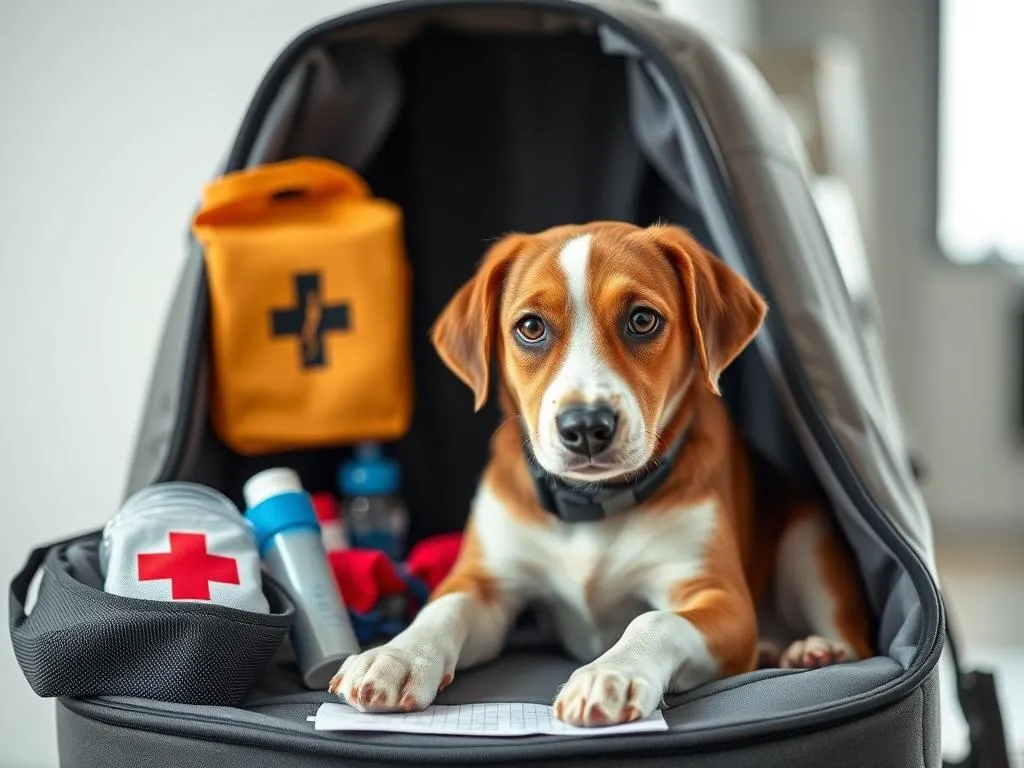
Introduction
Caring for our canine companions goes beyond regular walks and belly rubs; it involves proactive measures to ensure their health and safety. One crucial aspect of dog health care is emergency preparedness. Emergencies can arise at any moment, whether due to natural disasters, accidents, or sudden illnesses. Being prepared with a pet emergency kit checklist can make a significant difference in your dog’s well-being during such tough times. In this post, we’ll delve into the essentials of a pet emergency kit, exploring what to include and how to maintain it, ensuring your furry friend stays safe and healthy.
Understanding the Importance of Dog Health Care
Regular health care is fundamental to a dog’s overall well-being. Just like humans, dogs can experience a range of health issues, from minor ailments to serious conditions. Common problems include obesity, dental disease, and skin allergies, all of which can be mitigated with consistent veterinary care and a healthy lifestyle. Preventative measures such as regular vet check-ups and vaccinations are vital in safeguarding your dog’s health.
In addition to routine care, emergency preparedness is a significant component of dog health care. Emergencies can occur without warning, and having a plan can save your pet’s life. By understanding the potential risks and preparing in advance, you can ensure your dog receives the necessary care quickly and effectively.
What is a Pet Emergency Kit?
A pet emergency kit is a collection of essential supplies and tools designed to help both you and your pet during unexpected situations. The purpose of this kit is to provide immediate aid and comfort in emergencies, whether it’s a natural disaster like an earthquake or a sudden medical crisis.
Having a ready-to-use emergency kit can alleviate stress for both you and your dog. It helps you stay organized and informed about your pet’s health needs, ensuring that you have everything at your fingertips when it matters most.
Essential Items for a Pet Emergency Kit
A well-thought-out pet emergency kit checklist should include several key items. Here’s an overview of what to include:
First Aid Supplies
- Bandages and gauze: Essential for covering wounds and preventing infections.
- Antiseptic wipes and ointments: To clean minor cuts and scrapes.
- Medical tape: Useful for securing bandages.
- Tweezers and scissors: For removing splinters or cutting tape and gauze.
- Thermometer: Vital for monitoring your dog’s temperature in case of illness.
Food and Water Supplies
- Non-perishable food options: Consider packing dry kibble or canned food that won’t spoil.
- Portable water containers: Ensure hydration is readily available.
- Water purification tablets: Useful in emergency situations where clean water might not be accessible.
Medications and Health Records
- List of essential medications: Include flea/tick prevention, pain relief, and any other prescription medications.
- Health records and vaccination history: Keep copies of your pet’s medical history in a waterproof bag.
- Prescription list: Make sure to have a current list of all medications your dog takes.
Comfort and Safety Items
- Pet blankets and toys: These can provide comfort and familiarity during stressful situations.
- Leash, collar, and ID tags: Ensure your pet is easily identifiable in case of separation.
- Crate or carrier: A safe way to transport your pet and keep them secure.
Emergency Contact Information
- Local veterinarian contact details: Have your vet’s phone number and address readily available.
- Poison control hotline information: Know the contact details for emergency poison control.
- Emergency pet clinics: List nearby emergency clinics that specialize in animal care.
Miscellaneous Items
- Flashlight and batteries: Essential for power outages or nighttime emergencies.
- Whistle for signaling: Useful for attracting attention in emergencies.
- Duct tape and zip ties: Handy for quick repairs or temporary fixes in various situations.
How to Assemble Your Pet Emergency Kit
Creating a pet emergency kit involves gathering the essential items listed above. Here’s a step-by-step guide to help you assemble your kit:
-
Choose a container: Select a sturdy, waterproof container that can be easily transported. A backpack or a plastic bin works well.
-
Gather first aid supplies: Start with the basic first aid items and ensure they are stored in a waterproof pouch.
-
Add food and water supplies: Include enough non-perishable food and water for at least three days.
-
Include medications and health records: Gather all medications and health records, placing them in a waterproof bag or binder.
-
Pack comfort items: Add a blanket, favorite toys, and a leash/collar combo.
-
Add emergency contact information: Write down emergency contacts and store them in the kit.
-
Miscellaneous items: Include the flashlight, whistle, and duct tape last.
Customizing Your Kit
While the above items are essential, consider customizing your kit based on your dog’s size, age, and health needs. For instance, if your dog is elderly or has specific medical conditions, you might need specialized items that cater to their unique requirements.
Storage Solutions
Keep your emergency kit in a cool, dry place that is easily accessible. Regularly check the kit to ensure all items are in good condition, and consider keeping a second kit in your vehicle for added preparedness.
Regular Maintenance of Your Pet Emergency Kit
Maintaining your pet emergency kit is just as important as assembling it. Here are some best practices:
- Regular checks: Review your kit every three to six months to ensure all items are in working order.
- Update supplies: Replace any expired medications, food, or supplies. Check for the expiration dates on all perishable items and medications.
- Monitor your pet’s health: If your pet’s health needs change, adjust the contents of your kit accordingly.
Keeping your pet’s emergency kit up to date will provide peace of mind, knowing that you are prepared for any situation.
Additional Tips for Dog Health Care
In addition to having a pet emergency kit, prioritize regular health care for your dog. Here are some extra tips:
- Regular vet check-ups: Ensure your dog receives routine exams and vaccinations to prevent illness.
- Balanced diet and exercise: Feed your dog a nutritious diet and provide regular physical activity to maintain a healthy weight and energy levels.
- Recognizing signs of illness: Be vigilant for any changes in behavior, appetite, or energy levels, as these could indicate health issues that require veterinary attention.
Conclusion
A pet emergency kit checklist is an indispensable tool for any dog owner. Preparing in advance ensures that you are ready to handle emergencies effectively, reducing stress for both you and your pet. By assembling and maintaining a comprehensive emergency kit, you not only safeguard your dog’s health but also gain invaluable peace of mind. Taking proactive steps today can ensure your furry friend stays safe and secure during unforeseen circumstances.
Being a responsible pet owner means being prepared. Start assembling your pet emergency kit today, and equip yourself with the knowledge and tools necessary to protect your beloved canine companion.









